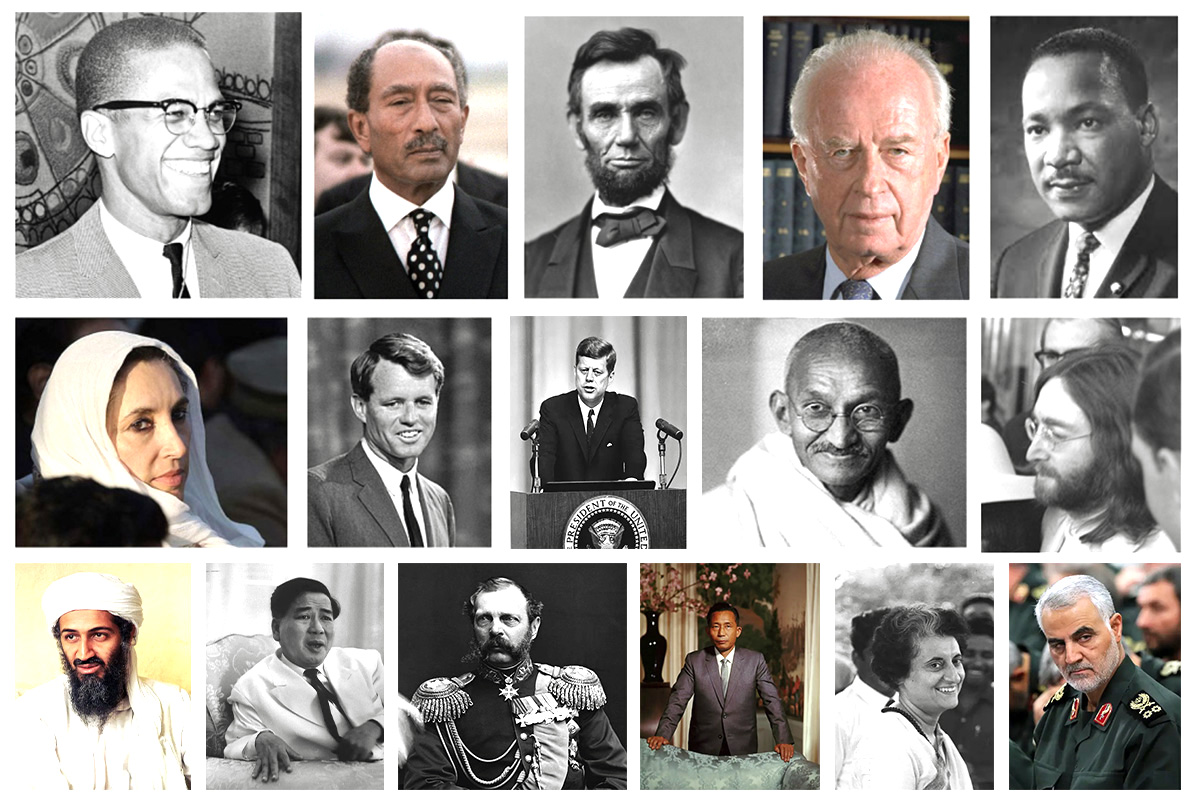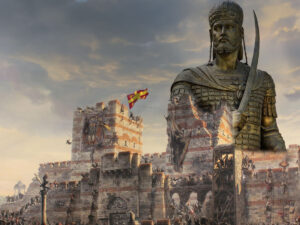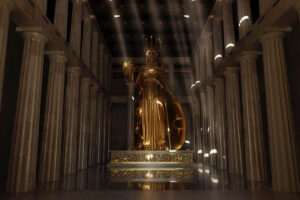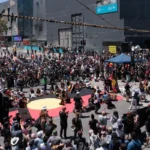Assassinations have long fascinated both historians and the general public, shaping the course of history in profound ways. From the stabbing of Julius Caesar (“Et tu, Brute?”) to the shootings of Mahatma Gandhi and J.F.K., these shocking acts have involved world leaders, activists, and celebrities. Despite the dramatic impact they often have, assassinations do not always achieve their intended effects.
Since 1981, “assassinations” have been illegal under U.S. federal law, although the definition remains somewhat vague. For instance, in 2020, President Donald Trump ordered a drone strike that killed Iranian Gen. Qassem Soleimani. The administration referred to it as a “targeted killing” rather than an assassination.
Iain King, a fellow at the Center for Strategic and International Studies, noted in an NBC article that while some assassinations have achieved their intended outcomes, they are less likely to produce the desired result when a government figure is targeted. “Even when conducted selectively, legally, and strategically, history suggests they can still turn out to be unwise,” King wrote.
In light of Saturday’s failed shooting attempt on Donald Trump at a rally, we reflect on other significant assassinations throughout history. Here are 44 assassinations that have had a major impact.
1. Philip II of Macedon was assassinated in 336 BC
Phillip II was King of the Greek kingdom of Macedon, and most notably the father of Alexander the Great. During a celebration of the marriage between Alexander I of Epirus and Philip’s daughter, Philip was killed in 336 BC by one of his own bodyguards, Pausanias of Orestis, at the age of 46 years old. Following the assassination, Pausanias made an attempt at escape, he was pursued by three of Philip’s bodyguards, who later caught and killed him
2. Rome’s ruler Julius Caesar was assassinated in 44 BC
Gaius Julius Caesar was a Roman general, and statesman. In January 49 BC, Caesar led his troops across the Rubicon and plunged the Roman Empire into a state of civil war, a war from which Caesar emerged as the unrivaled leader of Rome. On the Ides of March (March 15) 44 BC Caesar was assassinated by a cabal of over 60 men, he received 23 stab wounds over the course of the attack.
3. Thomas Becket was assassinated in 1170
Thomas Becket, also known as Saint Thomas of Canterbury, Thomas of Londonand later Thomas à Becket, served as Lord Chancellor from 1155 to 1162, and then notably as Archbishop of Canterbury from 1162 until his death in 1170. He engaged in conflict with Henry II, King of England, over the rights and privileges of the Church and was murdered on 29 December 1170, by followers of the King in Canterbury Cathedral. Soon after his death, he was canonised by Pope Alexander III. He is venerated as a saint and martyr by the Catholic Church and the Anglican Communion.
4. King Henri IV was assassinated in 1610
Descended from King Louis IX, Henry IV was a “prince of the blood” and was King of Navarre from 1572 to 1610 and King of France from 1589 to 1610. Known by the name ‘Good King Henry” Henry IV was a man of kindness and compassion; despite this, there were multiple attempts on his life. Henry IV was assassinated in Paris on May 14, 1610, by François Ravaillac, who stabbed him to death in the street. Ravaillac was taken into custody and repeatedly tortured, eventually, he was pulled apart by four horses, a punishment reserved for those who committed regicide.
5. President Abraham Lincoln was assassinated in 1865
A 26-year-old actor named John Wilkes Booth shot Lincoln in the head while he was at the theatre in Washington D.C., five days after the Civil War ended. Some in the South celebrated his death. Lincoln’s Vice President Andrew Johnson replaced him, and struggled to reunite the country after the war. During Reconstruction, Johnson was lenient to the Southern states, which led to restrictive “black codes” that ended up decimating the freedoms of freed slaves.
6. Tsar Alexander II was assassinated in 1881
Tsar Alexander II of Russia was best known for freeing the serfs in 1861, for which he became known as Alexander the Liberator. While on route to his usual Sunday appointment, Alexander’s carriage came under attack in the form of a bomb thrown by Narodnaya Volya, a member of a Russian left-wing terrorist organization known as The People’s Will. The emperor, unscathed by the explosion left his carriage, only for another bomb to fall at his feet, this one thrown by Ignacy Hryniewiecki, another People’s Will member. Alexander died shortly thereafter, on March 3, 1881.
7. James Abram Garfield was assassinated in 1881
James A. Garfield, the 20th president of the United States, was shot at the Baltimore and Potomac Railroad Station in Washington, D.C., at 9:30 am onSaturdayJuly 2, 1881. The mortally wounded president lay at the White House for several weeks but died in September 19, 1881after he was taken to the Elberon, New Jersey shore. Garfield was succeeded by Vice President Chester Arthur. The shooting occurred less than four months into his term as president. Charles J. Guiteau was convicted of Garfield’s murder and executed by hanging one year after the shooting.
8. President William McKinley was assassinated in 1901
A 28-year-old anarchist named Leon Czolgosz shot McKinley during a fair in Buffalo, New York in 1901. He died eight days later. While he may not be as well-known as many on this list, his death led to the modern version of the Secret Service, which ensures the president is adequately protected.
9. George I of Greece was assassinated in 1913
Born a Danish Prince in Copenhagen’s royal Yellow Palace, King George I of the Hellenes (1845-1913) was seventeen when he was elected to establish a new dynasty of kings by the Greek National Assembly who had deposed Bavarian-born King Otto and the unpopular Queen Amalia in 1862. While out on an afternoon walk near the White Tower in Thessaloniki on 18 March 1913, he was shot at close range in the back by Alexandros Schinas, who was “said to belong to a Socialist organization” and “declared when arrested that he had killed the King because he refused to give him money”.
10. Archduke Franz Ferdinand was assassinated in 1914
Serbian student Gavrilo Princip, 18, shot the archduke as he drove through Sarajevo, Bosnia. Ferdinand was the heir to the Austro-Hungarian empire, so his death wasn’t taken lightly. After he died, the empire declared war on Serbia. International allegiances pulled other countries into the conflict, which led to World War I, and the death or injury of more than 37 million soldiers. As The New York Times wrote in 1915: “What face the world will wear when it is all over no man can predict, but it will be greatly changed, and not geographically alone.”
11. Russian Tsar Nicholas II was assassinated in 1918
The tsar, his wife, and their five children were shot to death in a basement by Bolsheviks, a revolutionary socialist group, who had been holding them hostage for months. It was a brutal and poorly performed execution, in part because the children had diamonds sewn into their clothes to keep them hidden. But the gems acted like bullet-proof vests, prolonging the execution. The assassination of the Romanovs meant the end of the royal line for Russia. The country went from being ruled by imperial tsars to being a communist state, led by Joseph Stalin.
12. Rosa Luxemburg was assassinated in 1919
Rosa Luxemburg was a Polish and naturalised-German revolutionary socialist, orthodox Marxist, and anti-War activist during the First World War. She became a key figure of the revolutionary socialist movements of Poland and Germany during the late 19th and early 20th century, particularly the Spartacist uprising. Freikorps troops captured, tortured and executed Luxemburg on 15 January 1919, during the rebellion. Due to her pointed criticism of both the Leninist and the more moderate social democratic schools of Marxism, Luxemburg has always had a somewhat ambivalent reception among scholars and theorists of the political left.
13. Mexican general Emiliano Zapata was assassinated in 1919
General Emiliano Zapata was assassinated during the Mexican Revolution on the orders of then Mexican President Venustiano Carranza, on 10 April, 1919. Zapata had fought for poor farmers throughout his life. After his death he became a symbol for Mexican peasants and the working class. History.com reported that his land reforms are still important to many Mexicans today.
14. Leon Trotsky was assassinated in 1940
Lev Davidovich Bronstein, better known as Leon Trotsky, was a Russian revolutionary, Soviet politician, and political theorist. He was a central figure in the 1905 Revolution, October Revolution, Russian Civil War, and establishment of the Soviet Union. Trotsky, with Vladimir Lenin, was widely considered one of the two most prominent Soviet figures and was de facto second-in-command during the early years of the Russian Soviet Republic. Ideologically a Marxist and a Leninist, his thought and writings inspired a school of Marxism known as Trotskyism. In 1936, Trotsky was sentenced to death in absentia at the first of the Moscow show trials, and in 1940, was assassinated at his home in Mexico City by Stalinist agent Ramón Mercader.
15. Reinhard Heydrich was assassinated in 1942
Reinhard Tristan Eugen Heydrich was a high-ranking Nazi officer and one of the chief architects behind the holocaust. One of the darkest figures of the nazi regime, Adolf Hitler referred to Heydrich as “The man with the iron heart”. Jan Kubis and Jozef Gabcik orchestrated a coordinated attack on Heydrich on May 27, 1942, where he was fatally wounded by an explosive.
16. Indian leader Mahatma Gandhi was assassinated in 1948
Mahatma Ghandi, who successfully helped India gain political independence from Britain in 1947, was killed by a Hindu extremist on the way to evening prayers. He led many famous peaceful protests, including a 241-mile march to the Indian coast to harvest salt, which in turn led to 60,000 peaceful protesters being imprisoned. After his death, he has become a symbol of what mass protests can achieve, and an icon to later figures like Martin Luther King Jr. and former President Barack Obama.
17. Liaquat Ali Khan was assassinated in 1951
Nawabzada Liaquat Ali Khan was a lawyer, statesman, and one of the founding fathers of modern Pakistan. Ali Khan attended the Aligarh Muslim University in India, later attending Oxford University in the United Kingdom. On October 16, 1951, during a meeting of the Muslim City League, Khan was shot twice in the chest, the public forum preventing further security measures. The assassin, Saad Akbar Babrak, a professional assassin was immediately shot and killed by police. Ali Kahn succumbed to his injuries shortly after receiving a blood transfusion.
18. Congolese President Patrice Lumumba was assassinated in 1961
A police unit, under orders from a Belgium officer, assassinated Lumumba after a military coup overthrew his government. Lumumba’s assassination happened seven months after the Congo gained independence. According to NBC News, his killing led to widening chasm in US and African relations. The CIA had been involved, according to a later inquiry. Today, Lumumba is an icon for many African nationalists, and a reminder of Western “treachery”, according to the Irish Times.
19. South Vietnam President Ngô Đình Diệm was assassinated in 1963
Diệm was assassinated along with his brother in the back of an armored car, after the US overthrew his government. Former President John F. Kennedy, who had previously supported his rule in the 1950s, approved the coup. Diệm’s death led to more US troops entering Vietnam. As Newsweek’s Jeff Stein wrote, the coup and Diệm’s assassination led to “a nightmare that ended up killing 58,000 Americans (and 1.5 million Vietnamese), ripped the US apart and spawned a deep-rooted cynicism about the American political establishment that persists today.”
20. President John F. Kennedy was assassinated in 1963
Kennedy, one of the country’s most charismatic leaders, was shot twice by Lee Harvey Oswald while his motorcade drove through Dallas, Texas. The nation’s consuming grief over Kennedy’s death allowed his successor, Lyndon B. Johnson, to successfully pass two anti-segregation laws — the Civil Rights Act and the Voting Rights Act.
21. African American leader Malcolm X was assassinated in 1965
Malcolm X, a sometimes controversial religious and civil rights leader, was shot by members from the Nation of Islam. The Nation of Islam was a religious group he used to be a minister for, before he broke away started his own group, called the Organization of Afro-American Unity. Many expected his impact to wane after death, but the opposite happened. He became an icon for racist persecution. His rise was in part due to the publication of his autobiography a few months after his death. It was named one of Time’s most important non-fiction books of the 20th century. And according to Time, the combination of the book and his death caused his life story to be remembered for his perseverance rather than his focus on racial separatism.
22. Civil rights activist Martin Luthor King Jr. was assassinated in 1968
A 40-year-old convicted robber named James Earl Ray shot King dead in Memphis. King was famous for his activism and empowering speeches. He led many non-violent protests, including the bus boycott after Rosa Parks was arrested for refusing to give up her seat on a bus. After his death, King remains an icon of hope for racial unity. Peniel E. Joseph wrote for the Washington Post that King’s death was a blow to America recognizing and dealing with its inherent power structures, which had oppressed African Americans and people in poverty.
23. Sen. Robert F. Kennedy was assassinated in 1968
Jordanian refugee Sirhan Sirhan, 24, shot Kennedy after a speech at the Ambassador Hotel in Los Angeles. After death, Kennedy became an icon for the Democratic Party. He was seen as a potentially unifying force for the country, since a lot of his campaign had focused on civil rights. The impact of his death is harder to gauge than others on this list, but he had just won the California primary, and was gunning for the Democratic presidential nomination. Although Joshua Zeitz wrote for Politico, “The hard reality is this: Bobby Kennedy would most likely not have won the presidency, because he was already on track to lose his party’s nomination.”
24. Pierre Laporte was assassinated in 1970
Pierre Laporte was a Canadian lawyer, journalist and politician. He was deputy premier of the province of Quebec when he was kidnapped and murdered by members of the Front de libération du Québec (FLQ) during the October Crisis, on 17 October 1970.
25. King Faisal was assassinated in 1975
Faisal bin Abdulaziz Al Saud was King of Saudi Arabia from 1965 to 1975, On March 25, 1975, he greeted his nephew, Prince Faisal bin Musaid, who had recently returned from a visit to the United States. While leaning in to kiss his nephew in accordance with Saudi custom, the Prince drew a pistol and fired point-blank at the King. Struck twice in the head, King Faisal was rushed to the hospital, he died on March 25, 1975. Prince Faisal was captured directly after the attack and was eventually sentenced to death. He was beheaded in Riyadh on June 18, 1975.
26. Harvey Milk was assassinated in 1978
Harvey Bernard Milk was the first openly gay person to be elected to public office in California. He won his seat as city (San Francisco) supervisor in 1977 and served almost 11 months before he and Mayor George Moscone were assassinated by Dan White, a city supervisor who had recently resigned but wanted his old job back. After a confrontation, White shot both Milk and Moscone on November 27, 1978.
27. Lord Louis Mountbatten was assassinated in 1979
The Irish Republican Army assassinated Lord Mountbatten, a military strategist and mentor to Prince Charles, by planting and remotely detonating a bomb in his fishing boat. The blast killed three others, as well. The assassination was meant to show that even the pinnacle of British society was not safe from the IRA, as the army attempted to end British rule of Northern Ireland. According to History.com, the attack, along with another that day that killed 18 soldiers, led to Margaret Thatcher’s government taking a “hard-line” stance against the group.
28. South Korean President Park Chung-hee was assassinated in 1979
President Park Chung-hee was shot at a restaurant by his friend, Kim Jae Kyu, the chief of the Korean Central Intelligence Agency. Since Park took over the country after a military coup in 1961, he had ruled with “an iron fist.” Kim said he assassinated the president to bring democracy back to South Korea. Many South Koreans missed Park, because he led the country as it built up its own economy and managed to break away from the US. Since his death, that success is often focused on, rather than his militant regime.
29. John Lennon was assassinated in 1980
John Winston Ono Lennon was a singer, songwriter, and founding member of one of the most iconic brands in the world, The Beatles. Early in the evening of December 8, 1980, Lennon signed a copy of Double Fantasy for a man named Mark David Chapman. At 10:58 PM, while returning home with his wife Yoko Ono, Chapman shot Lennon in the back four times. Lennon was rushed to the hospital but was pronounced dead on arrival. Chapman was convicted of the murder of John Lennon and was sentenced to 20 years to life in jail.
30. Egyptian President Anwar Sadat was assassinated in 1981
Assassins pretending to be soldiers shot Sadat as he watched Victory Day celebrations in Cairo. Steven Cook, who wrote a book called “The Struggle for Egypt: From Nasser to Tahrir Square,” told NPR that while the country was shocked at his death, many were ambivalent about his role as a politician. This was because of some of his decisions during his tenure. His leadership changed Egypt. He pulled away from Russia and moved closer to the US. He also started a war with Israel then ended it several years later. Al-Zomor, one of the men who supplied ammunition to the assassins, told NBC News while he didn’t regret Sadat’s death, his successor, President Hosni Mubarak, was worse. According to him, Sadat was “thousands of times better.”
31. Bachir Gemayel was assassinated in 1982
Bachir Pierre Gemayel was a Lebanese militia commander who led the Lebanese Forces, the military wing of the Kataeb Party in the Lebanese Civil War and was elected President of Lebanon in 1982. He founded and later became the supreme commander of the Lebanese Forces, uniting major Christian militias by force under the slogan of “Uniting the Christian Rifle”. Gemayel allied with Israel and his forces fought the Palestine Liberation Organization and the Syrian Army. He was elected president on 23 August 1982, but he was assassinated before taking office on 14 September, via a bomb explosion by Habib Shartouni, a member of the Syrian Social Nationalist Party. Gemayel is described as the most controversial figure in the history of Lebanon. He remains popular among Maronite Christians, where he is seen as a “martyr” and an “icon”. Conversely, he has been criticized for committing alleged war crimes and accused of treason for his relations with Israel.
32. Indian Prime Minister Indira Gandhi was assassinated in 1984
Gandhi, who led the country for 15 years, was shot by two of her Sikh bodyguards. The assassination was in response to Gandhi ordering the army to raid the Golden Temple, the holiest Sikh shrine, to flush out Sikh separatists who were inside. Gandhi’s death caused widespread violence. Within days, mobs killed thousands of Sikhs, and many police officers and government officials didn’t stop the violence, but helped incite it.
33. Olaf Palme was assassinated in 1986
Sven Olof Joachim Palme was a Swedish politician and statesman who served as Prime Minister of Sweden from 1969 to 1976 and 1982 to 1986. Palme led the Swedish Social Democratic Party from 1969 until his assassination. Walking home from the Grand Cinema with his wife Lisbeth Palme on the central Stockholm street of Sveavägen, close to midnight on 28 February 1986, the couple were attacked by a lone gunman. Palme was fatally shot in the back at close range at 23:21. A second shot wounded Mrs Palme.
34. Former Indian Prime Minister Rajiv Gandhi was assassinated in 1991
Gandhi became prime minister after his mother’s death, but a Tamil Tigers suicide bomber assassinated him in southern India. At the time he was no longer in power and was running to be prime minister again. Gandhi had made an enemy of the Tamil Tigers, a militant group based out of Sri Lanka, after he sent thousands of troops to help Sri Lanka fight the Tigers four years earlier. His death had a lasting repercussion for India leaving a “political void,” according to The New York Times, since the government had been led by his family for most of the 45 years leading up to his death.
35. Israeli Prime Minister Yitzhak Rabin was assassinated in 1995
Yigal Amir, a right-wing Jewish law student, shot Rabin as he left a peace rally. Rabin had been trying to establish peace between Israel and Palestine. Two years earlier he’d moved things along when he met with Palestine to try establish a way Palestine could be independent. But Amir didn’t want peace with Palestine, and in that regard his assassination of Rabin was successful. According to The New Yorker, his assassination could be one of the “most effective” in history. Since then, there has been no peace deal. As Dan Ephron wrote for Politico, “Thus, in killing the Israeli leader, Amir did better than the assassins of Lincoln, Kennedy and King, whose policies gained momentum as a result of their murders rather than the other way around.”
36. Notorious B.I.G. & Tupac Shakur assassinated in 1996 & 1997
Notorious B.I.G. & Tupac Shakur: the two famous rappers met the same end on nearby dates and the conspiracy theories are well and truly ignited. Both were shot in gang warfare-related shootings and everyone tends to conclude that their deaths were anything but coincidental. They implicate the police, rival gangs, and the role that Notorious B.I.G. may have played in Shakur’s death.
37. Gianni Versace was assassinated in 1997
Giovanni Maria “Gianni” Versace was an Italian fashion designer, socialite and businessman. He was the founder of Versace, an international luxury-fashion house that produces accessories, fragrances, make-up, home furnishings and clothes. On the morning of 15 July 1997, Versace exited his mansion and walked on Ocean Drive to retrieve his morning magazines. Usually, Versace would have an assistant walk from his home to the nearby News Cafe to get his magazines, but on this occasion, he decided to go himself. Versace had returned and was climbing the steps of his Miami Beach mansion when a man shot him twice in the head. Versace was pronounced dead at Jackson Memorial Hospital in Miami, at 9:21 a.m. He was 50 years old at the time of his death. Versace’s murder was witnessed by his former UK senior stylist, Dean Aslett, who was on vacation in South Beach, Miami, and had partied with Versace a few days prior. Versace was the last victim of Andrew Cunanan, a Serial killer who had earlier murdered four other men (including real estate developer Lee Miglin). Cunanan died by suicide on a houseboat eight days after Versace’s murder.
38. Rafiq al-Hariri was assassinated in 2005
Rafic Bahaa El Deen al-Hariri, also known as Rafiq al-Hariri, was a Lebanese businessman and politician, who served as the Prime Minister of Lebanon from 1992 to 1998 and again from 2000 until he resigned on 20 October 2004, before his assassination in 2005. Hariri headed five cabinets during his tenure. On 14 February 2005, former Prime Minister of Lebanon Rafic Hariri was killed along with 21 others in an explosion in Beirut, Lebanon. Explosives equivalent to around 1,000 kilograms (2,200 pounds) of TNT were detonated as his motorcade drove near the St. George Hotel. Among the dead were several of Hariri’s bodyguards and former Minister of the Economy, Bassel Fleihan. Hariri had been part of the anti-Syrian opposition in Lebanon. His assassination triggered the Cedar Revolution, a popular movement which forced Syria to withdraw all its troops in Lebanon by April 2005.[The killing also led the United Nations to set up the Special Tribunal for Lebanon to investigate the killing. The Special Tribunal, along with an independent investigation carried out by Lebanese Brigadier General Wissam al-Hassan, found compelling evidence for the responsibility of the Lebanese militant group Hezbollah in the assassination. One of the investigators, Wissam Eid, was assassinated in 2008. In August 2020, judges at the Special Tribunal for Lebanon found Salim Ayyash, a mid-level operative in Hezbollah, guilty in absentia of five charges including the intentional murder of Hariri with premeditation by using explosive materials. Three other defendants were acquitted. The panel of judges concluded there was “no evidence that the Hezbollah leadership had any involvement in Hariri’s murder and there is no direct evidence of Syrian involvement.” Hezbollah denied any involvement and its leader, Hassan Nasrallah, refused to allow the arrest of Ayyash.
39. Former Russian spy Alexander Litvinenko was assassinated in 2006
Litvinenko was assassinated with a tea that was laced with a radioactive poison called polonium. It was the only time this form of assassination has ever been recorded. After an official investigation, it was found that the poison was administered by former KGB body guard Andrei Lugovoi and an accomplice, and that Russian President Vladimir Putin had “probably” ordered the assassination. Litvinenko was a target because he was about to testify about Putin’s government in a Spanish investigation. According to The Atlantic, this was a key moment in Russia’s foreign relations, because Putin realized what he could get away with.
40. Prime Minister of Pakistan Benazir Bhutto was assassinated in 2007
Bhutto, Pakistan’s first female prime minister, was assassinated by a 15-year-old suicide bomber after an election rally. There are some disputes over the exact cause, as members of her party said she died by bullet wounds before the explosion. She had returned to Pakistan only a few months earlier to run for a third term as prime minister, after spending eight years outside the country. Right after her death, protests went through cities and mobs set trains on fire. Years after her death she’s still a symbol in the country, with her face and message used in ads, and by other politicians. According to Al Jazeera, her death made her “a ‘martyr’ for the cause of democracy,” and washed away many of her faults.
41. Al Qaeda leader Osama Bin Laden was assassinated in 2011
Bin Laden, who was responsible for the September 11 terrorist attacks, was shot by US Special Forces on the orders of former President Barack Obama. This was one of the US’s more successful assassinations, Iain King wrote for NBC, because he was a leader of a terror organization and not part of a recognized state. Former President Bill Clinton said he had a shot at killing bin Laden before 9/ 11, but to do so he would have had to destroy a town and kill 300 innocent people. So he didn’t do it.
42. Islamic State leader Abu Bakr al-Baghdadi was assassinated in 2019
US forces also assassinated Baghdadi. His death was a blow to ISIS, but didn’t cripple it. According to Brookings, Baghdadi’s death put the terrorist group on the defensive, meaning it had to focus on its survival rather than conducting more terrorist attacks. Like Osama Bin Laden, this was another successful assassination for the US since Baghdadi had no ties to a recognized state, Iain King wrote for NBC.
43. Iranian Major Gen. Qassem Soleimani was assassinated in 2020
President Donald Trump ordered the assassination of Soleimani by drone attack, near the Baghdad airport. Soleimani was commander of the Revolutionary Guard Corps, and reported to Iran’s Supreme Leader Ayatollah Ali Khamenei. While he was deemed a terrorist in the US, he was lauded in Iran. After his death, tensions between the two countries reached a fever pitch. Iran promised revenge. Khamenei said the goal was to get the US to leave the Middle East. It launched an airstrike on two US-occupied bases in Iraq, but no one was injured. The US did not retaliate with more military strikes, but the conflict is still simmering.
44. Jovonel Moïse was assassinated in 2021
Jovenel Moïse was a Haitian politician and entrepreneur, who served as the 43rd president of Haiti from 2017 until his assassination in 2021. He assumed the presidency in February 2017 after winning the November 2016 election. During his term, Haiti experienced widespread protests and unrest. He was assassinated on 7 July 2021, at his residence in Port-au-Prince. His death plunged the country, already suffering from rising violence and an economic crisis made worse by natural disasters, into further turmoil. Police say a group of mercenaries, most of them Colombians, was behind the attack, which they suspect a Haitian doctor of ordering as part of a plot to become president. Dozens of people have been arrested in connection with the case. But for the most part, the investigation has been slow, and the exact details about the people who carried out the plan and their real motives still remain unclear.












